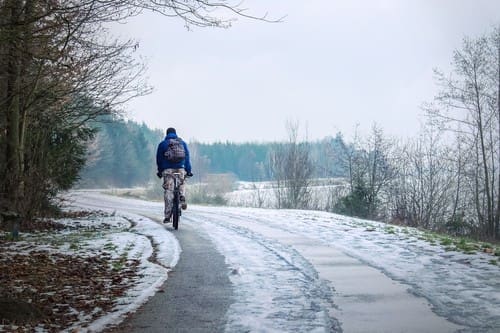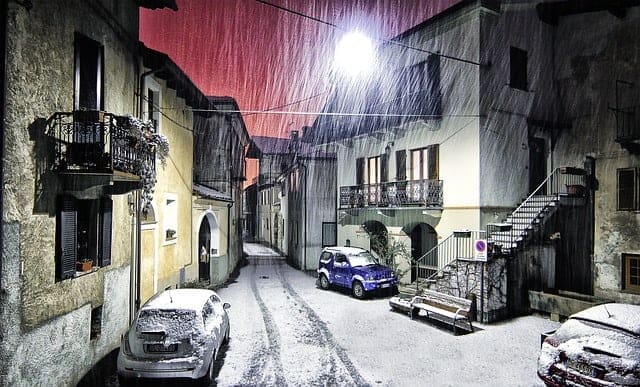Whether you commute every day or head out on the occasional weekend, staying safe on Britain’s roads t when you enjoy winter cycling this winter means taking care of yourself and your bike.

Here’s ten essential tips for safe winter cycling:
1. Check the Highway Code
Every cyclist, just like every other kind of transport user has rights and responsibilities on the road, but familiarity can lead to the development of bad habits and in the winter this can make you vulnerable to accidents and injuries.
Don’t ride on the pavement to avoid gutter puddles, brush up on your knowledge of the Highway Code.
2. Bike Maintenance
Before taking to the road, even for short journeys, make time to give your bike regular maintenance checks. Review the brakes for responsiveness, check the tyre pressure and condition of your wheels, see whether the chain needs lubrication and inspect the frame for any signs of wear or damage.
3. Bike Cleaning
The general dirt and debris that your bike accumulates will build up, almost invisibly on the frame and all its component parts and this can lead to impaired or dysfunctional performance, rust and premature wear and damage.
Clean your bike thoroughly with warm soapy water and a soft bristled brush and dry it with a soft cloth.
Those three bits of safety advice stand all year-round, now for the winter specifics…
4. Clothing
When you’re comfortable enough to forget about your clothing you’re free to focus on the ride so dress appropriately for the weather.
When faced with an icy morning chill it can be tempting to don some winter woollies, but cycling will generate a lot of body heat so pair lightweight, breathable layers with waterproof trousers and a jacket.
5. Accessories
These aren’t essential but they can make your ride safer and much more comfortable.
Panniers: With all sorts of extras to carry about in the winter it may be worth getting panniers to equally balance any extra weight.
Mudguards: Unless you want to arrive everywhere with dubious looking, wet and dirty stains up your back, it’s wise to invest in a quality pair of mudguards now.
6. Visibility
Visibility for you and visibility of you are essential. Pay close attention to the road surface and other road users to spot hazards and make sure you’re seen clearly from any angle with quality front and rear lights (and always carry spare batteries) and high-viz clothing and/or accessories.
7. Planning
Is your bike or its components really cut out for winter riding? If not, now is the time to source some alternatives and plan trips more carefully.
Consider whether you need wider tyres with a deeper tread or rubber grips for greater traction and stability, whether you should carry kit for a loss of daylight while you’re out, and if you’re planning to cycle out of your regular comfort zone onto more challenging or exhilarating terrains, always tell someone where you’re going and when you’ll be back.
8. Winter Cycling Emergency Kit
There’s no need to carry a full-blown first aid box but a few basic supplies could save the day. Always carry a well charged mobile, a few plasters, some sterile wipes and a puncture repair kit.
9. Slow Down
Fog and freezing temperatures can affect the traction of road surfaces so allow more time for regular journeys. There’s nothing wrong with being a cautious cyclist so take those corners more slowly and begin braking sooner, especially on any descents.
10. Nutrition
It’s essential to maintain hydration levels during winter rides. You may not feel as sweaty but that’s often down to winter-wear wicking moisture away from your body. Carry water, snacks that are rich in carbohydrates and proteins and change into dry, warm clothing at the end of every ride.
Looking for more advice or some winter cycling kit? You can find everything you need, from insider tips to the latest road bikes for sale, instore and online at Formby Cycles.




